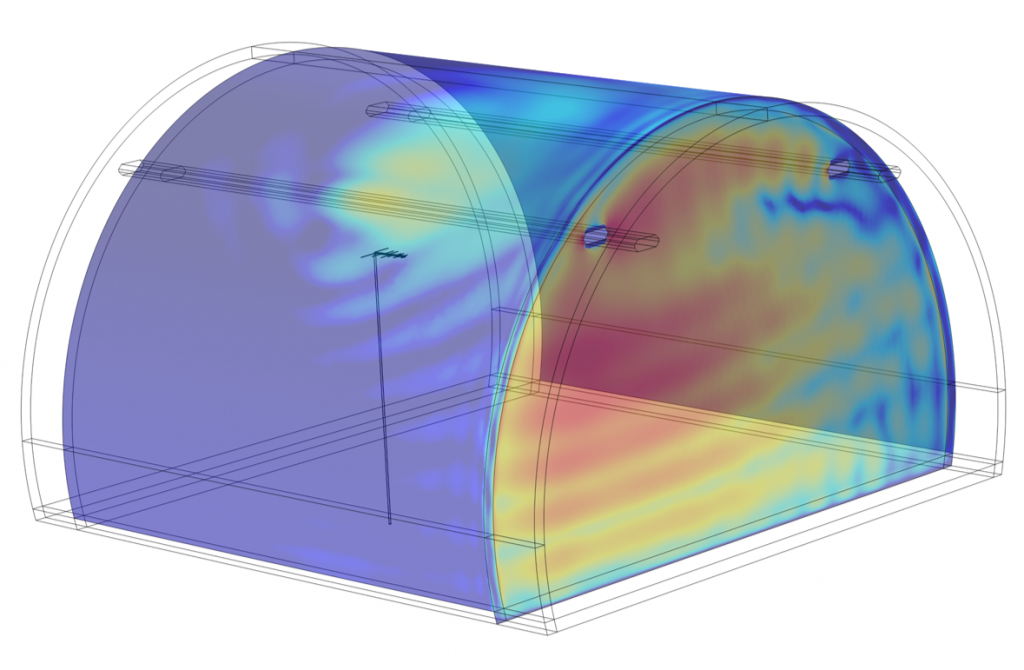Digital radio broadcasting service coverage inside motorway tunnels: a simulation study for the service coverage optimization
During the last COMSOL 2023 conference held in Munich last October, RAI CRITS presented the first results of a study aiming to investigate possible solutions to guarantee a satisfactory coverage of Digital Audio Broadcasting (DAB) service, in the 200 MHz frequency band, for challenging scenarios like tunnels. Preliminary field tests receiving the RF signal from nearby broadcast transmitters, have confirmed the known difficulty of assuring a fair quality of service in tunnels. Typically, radio service inside galleries is provided by radiating cables (“leaky-feeders”) installed along the tunnel ceiling. However, the installation of new radiating cables is expensive: even in tunnels already installed with radiating cables and in use for other radio systems (e.g. FM radio, mobile telephony…), the introduction of additional services / frequencies requires expensive adaptation.
As an alternative and cheaper approach, we are currently investigating the “direct RF radiation” by means of antennas positioned near gallery’s entrance, either internally or just outside it. A simulative approach is desirable, to investigate the impact of the design parameters, but also to serve as a tool for estimation of the achievable service coverage.
By means of COMSOL Multiphysics®, we have modelled a segment of gallery, parametrized in terms of section geometry, length, curvature radius, and surface’s electromagnetic parameters. However, for the FEM simulation the maximum length of the segment is limited by the available computer memory. Therefore, employing the LiveLink™ for MATLAB® module, the full tunnel has been simulated as a sequence of short segments. The first excitation is obtained from a separate model, including the transmitter antenna, positioned either outside the gallery, or at the ceiling of the first segment (Fig.1).
Although the simulative study is still ongoing, interesting results have emerged from this preliminary analysis, suggesting useful advice for the design of direct RF radiation installations for DAB/DAB+ services.
